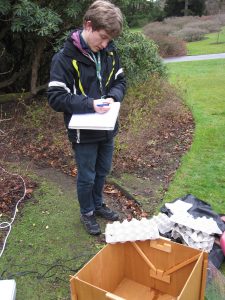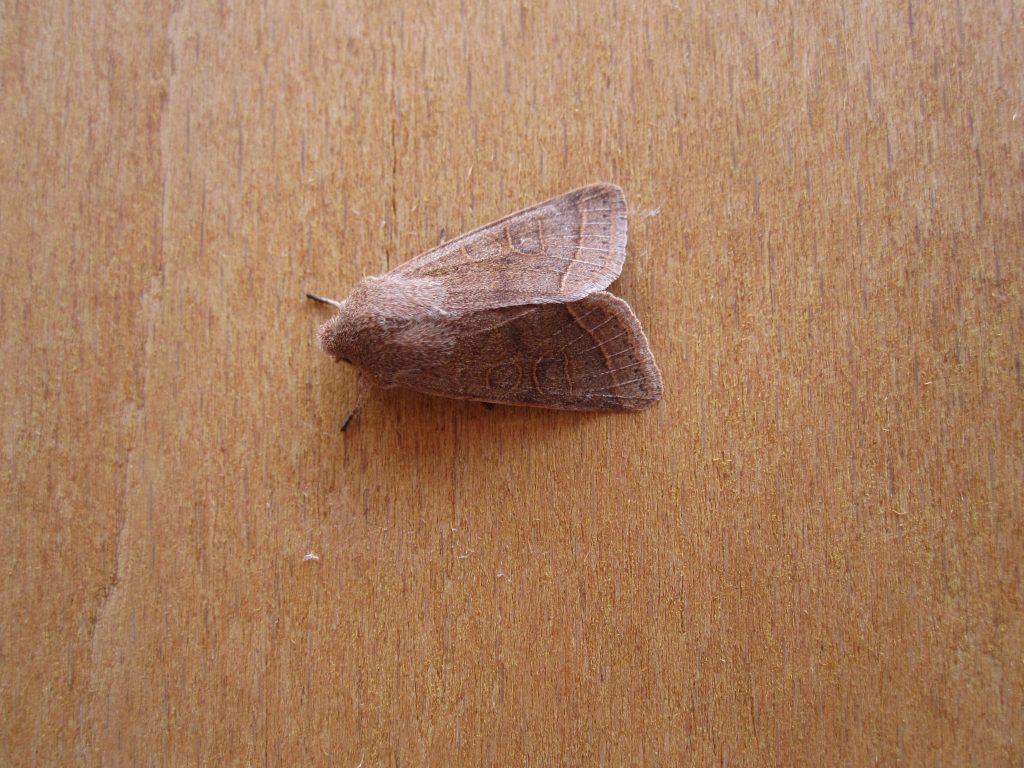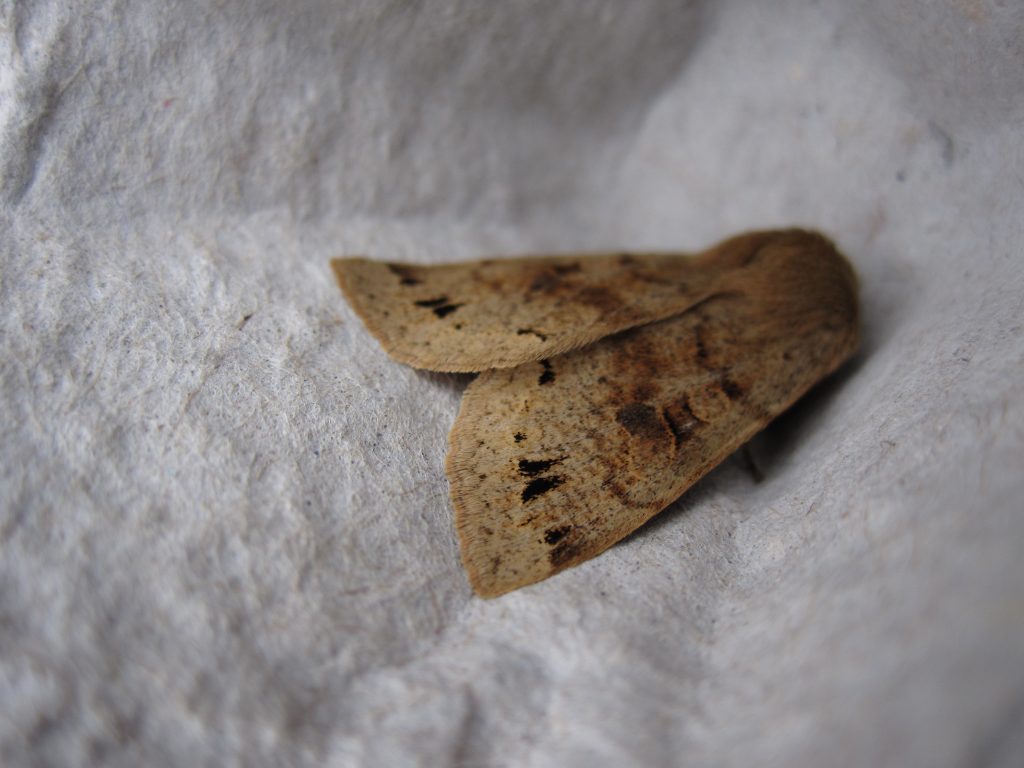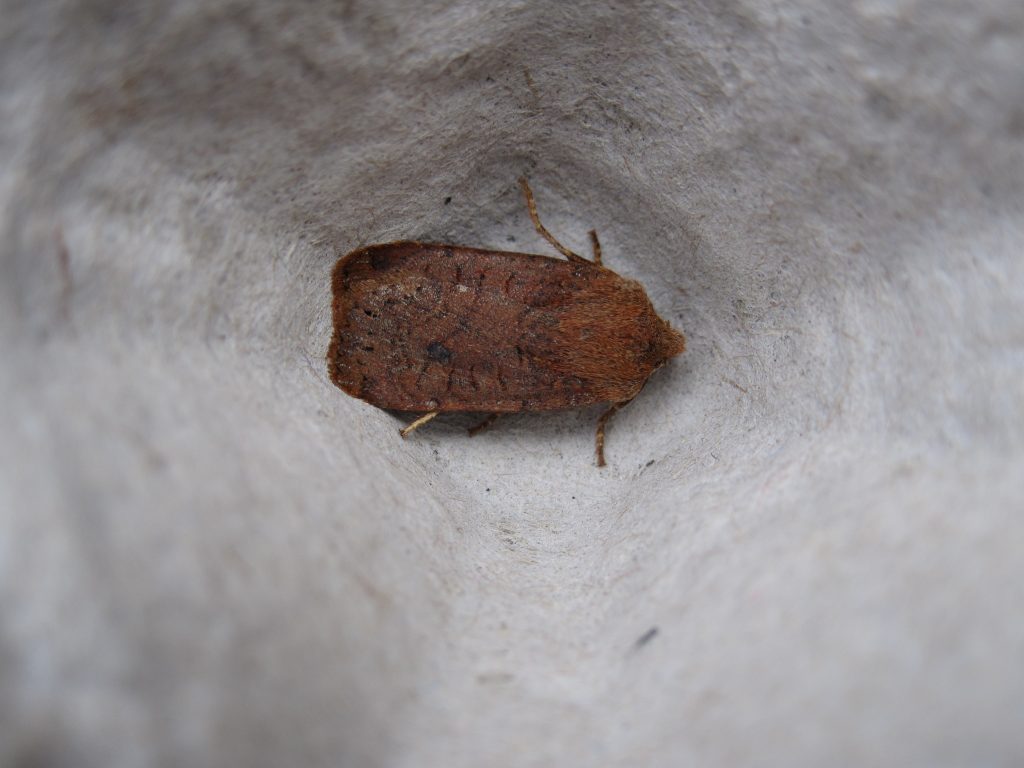Monitoring the wildlife in the Garden is an ongoing task that helps us understand the value of gardens, and other amenity greenspaces, for all sorts of different animals. Moth trapping is the latest activity to become a regular focus of attention. With the help of a grant from the Friends two portable moth traps have been purchased to allow regular trapping throughout the year.
Recent BioBlitz events at the Edinburgh Garden, Logan and Dawyck have all shown how many moth species are using the gardens as a habitat. A typical summer trapping could easily include 60 different species. Some are impressive large species you might think would only be encountered somewhere more exotic than Edinburgh.
Around 6pm on the 23rd March a single mains-powered Skinneer trap was set in the Garden and left running over night. The following morning moth recorder and Garden MSc student Tom Dawes found eight individuals of four different moth species. Two of these, Twin-spotted Quaker and Chestnut, (pictured below) are new records for the Garden.
Tom has been trapping moths since his grandfather bought him a trap as a 12th birthday present. According to Tom…
Now is a good time to check for species that are more cold tolerant and would normally be emerging in early spring. Trapping all year will build up a much better picture of the moths of the Garden and is well worth doing despite numbers often being low in winter.
 The future of moth trapping looks bright. Both the Edinburgh Natural History Society and local volunteer recorders helping Butterfly Conservation have offered to help ensure regular trapping takes place.
The future of moth trapping looks bright. Both the Edinburgh Natural History Society and local volunteer recorders helping Butterfly Conservation have offered to help ensure regular trapping takes place.
Work is in the final stages to produce a new moth atlas for Britain and volunteer recorders are keen to get records for areas that are currently relatively poorly recorded. All of the Garden’s moth records will be made available for this national effort and will be sent to the local biological records centre.
Ultimately all of this data is freely available via the online resource called the NBN Gateway. So if you want to know more about the wildlife in your area the information is only a mouse click away.





